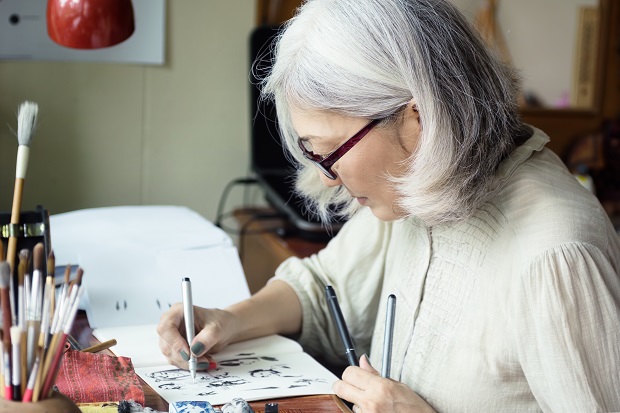
We all have archetypes and some you may identify with, such as the inner goddess, the wounded child, the wizard, the dreamer, to name just a few.
Archetypes have been around for centuries. You may be familiar with psychologist Carl Jung who brought archetypes out of the closet and into modern times. Jung believed that our “collective unconscious”, as he called it, is inherited rather than developed, and is a collection of archetypes and mythological figures.
As a Certified Creative Depth Coach, Soul Collage® Facilitator, JourneyCircles™ Facilitator I work with women and merge a unique blend psycho-spiritual awareness, various expressive arts as well as mindfulness, archetypal presence, experiential processes, and journey work. In our work together, I often help women with one of the archetypes that we all have, the inner critic.
Your inner critic is a universal archetype. Though it shows up differently for everyone, it is always there just waiting for you to wake it up. Viewing our inner critic from this point of view means we maintain some curiosity and understanding of our critic, but we don’t have to believe it. It is just along for the ride.
Sometimes your inner critic archetype is not very nice and can be downright nasty. Your inner critic is unconscious and is part of you. Your inner critic can be the gentle parts of yourself that want to feel safe and free from danger or vulnerability.
As Eric Morris explains, “The inner critic is there, because you have a mind that likes to problem-solve and judge everything. The trick is to consider this as just your mind doing its thing, and that you don’t have to follow it.”
Becoming aware of your inner critic is step one. Secondly, reach a place of being able to observe your critical thoughts. One you are aware of your inner critic you can then make a change.
Using your creativity, (yes, we are all creative) I invite you to name your inner critic, then I suggest you paint your inner critic and finally you will learn to love your inner critic.
Your inner critic won’t ever dissipate forever but saying I see you and I love you will make it, so your inner critic is a beautiful energy. A beautiful energy that can be right by your side instead of in hiding.
A Creative Depth Exercise for When the Inner Critic Shows Up:
- Give your inner critic a name. Any name that is feels right for you. For example, my inner critic’s name is, “hey girlie”. The more humor you use the better because it shifts the energy. Naming your inner critic archetype empowers you to identify it quickly when it shows up and using humor can help shift the shame.
- Using a piece of paper draw an image of your inner critic. You can use crayons, markers, colored pencils or whatever you have on hand. Have fun and trust that whatever lands on the paper is supposed to land on the paper.
- Paint the image of your inner critic. It’s best to use your fingers just like you did as a child. Painting with your fingers is a very sensory exercise that will lessen the power of your inner critic’s voice. If you can’t tolerate having paint on your fingers, use a paint brush. Whichever way you choose make it fun! You are literally painting the pain away!
- Whenever the energy of your inner critic archetype is super strong, create an image of your inner critic that is present at that time. The act of putting color on paper is a very freeing exercise that will immediately get you out of your head.
- Offer your inner critic a space of compassion yet let them know your soul calls the shots. Ask your inner critic what they need and to clearly explain their fears. Listen, then very gently speak to them from your soul. Assure them that they are protected. Inform them that your soul is wise, creative, and capable of handling anything.
- Honor your inner critic by placing the image you created in a predominant space.
Your inner critic wants you to reach it and it’s trying to reach you. By wrapping your inner critic in beauty, it will help you release your inner critic. Instead of pushing away your annoying inner critic, I invite you to address it as you would a close friend or neighbor.
When we ignore or push our inner critic away, it creates strain, and we tend to get into a place of scarcity instead of abundance. Instead let’s look at our inner critic and the energy and force it can provide us.
You’ll discover that working, and playing, with your inner critic archetype is a healing process.




